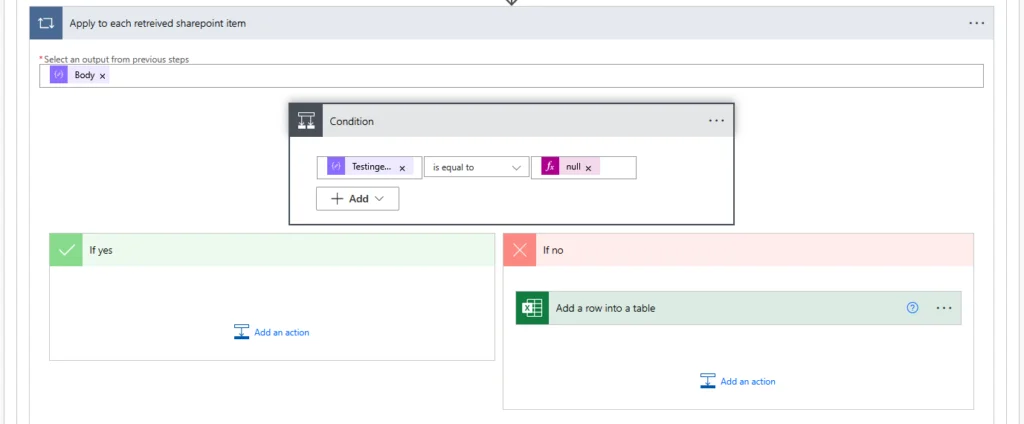Managing and tracking changes in SharePoint items can be a time-consuming task, especially when dealing with large lists and multiple versions. Fortunately, Power Automate provides a seamless solution to extract SharePoint version history and log relevant details into an Excel table. In this blog, we’ll walk through a Power Automate flow that automates this process, helping you streamline your workflow and improve efficiency.
Step-by-Step Breakdown
- Trigger: Manually Trigger a Flow
- Type: Request (Button Trigger)
- Description: This flow is triggered manually by a user pressing a button. The user provides inputs such as location and date, which can be utilized in subsequent actions.
- Open Power Automate and create a new flow.
- Select Instant Cloud Flow and choose Manually Trigger a Flow.

- Action: Get List of SharePoint Items
- Type: OpenApiConnection
- Operation: GetItems
- Description: This action retrieves up to 2500 items from a specified SharePoint list, providing the necessary data for further processing.
- Add a new step and search for SharePoint.
- Select Get Items.
- Configure the action by selecting the SharePoint site URL and list name.

- Control: Apply to Each SharePoint Item
- Type: Foreach
- Description: This control loops through each item retrieved from SharePoint.
- Add the Apply to each action.
- Select the value from the previous SharePoint Get Items action.

- Action: HTTP GET SharePoint Item History
- Type: OpenApiConnection
- Operation: HttpRequest
- Description: Fetches the version history of each SharePoint item using an HTTP GET request.
- Add a new step and search for HTTP.
- Select Send an HTTP Request to SharePoint.
- Configure the request to retrieve the version history of the item.

- Action: Parse JSON – SharePoint History
- Type: ParseJson
- Description: Converts the retrieved SharePoint history data into a structured JSON format for further processing.
- Add a Parse JSON action.
- Use the output from the HTTP request as input.
- Define the schema to parse the response correctly.

- Control: For Each SharePoint History Item
- Type: Foreach
- Description: Iterates through each item in the version history.
- Add another Apply to each action.
- Select the parsed JSON history value.

- Action: Compose Retrieved SharePoint Item
- Type: Compose
- Description: Extracts relevant information from each version history entry.
- Add a Compose action.
- Extract relevant properties from the SharePoint item history.
- Add a Compose action.
- Extract relevant properties from the SharePoint item history.

- Action: Parse JSON Retrieved SharePoint Item
- Type: ParseJson
- Description: Converts the extracted SharePoint item data into a JSON format that can be processed in later steps.
- Add another Parse JSON action.
- Use the composed SharePoint item as input.

- Control: Apply to Each Retrieved SharePoint Item
- Type: Foreach
- Description: Iterates through each parsed SharePoint item.
- Add another Apply to each action.
- Select the parsed SharePoint item value.
- Action: Condition Check
- Type: If
- Description: Evaluates whether the Testingengagement property is null.
- If Testingengagement is not null, the flow proceeds to the next action.
- Otherwise, the iteration skips to the next item.
- Add a Condition action.
- Set the condition to check if the Testingengagement property is not null.

- Action: Add a Row into a Table
- Type: OpenApiConnection
- Operation: AddRowV2
- Description: Inserts a new row into an Excel table with relevant
details from the SharePoint item.
- SharePoint ID
- Version ID
- Title
- Created Date
- Modified Date
- Author Email Name
- Modified By Email Name
- If the condition is met, add a new step and search for Excel Online (Business).
- Select Add a row into a table.
- Configure the action by selecting the location, document library, file, and table.
- Map the fields from the SharePoint item to the Excel table.

Summary
This Power Automate flow simplifies the process of tracking SharePoint version history by:
- Automatically retrieving SharePoint list items and their version history.
- Parsing and processing each version entry.
- Extracting key details and logging them in an Excel table.
- Ensuring that only relevant items (where Testingengagement is not null) are recorded.
With this solution in place, you can maintain a detailed log of SharePoint changes without manual effort, improving efficiency and data accuracy. Try implementing this flow in your environment and enhance your SharePoint data management today!